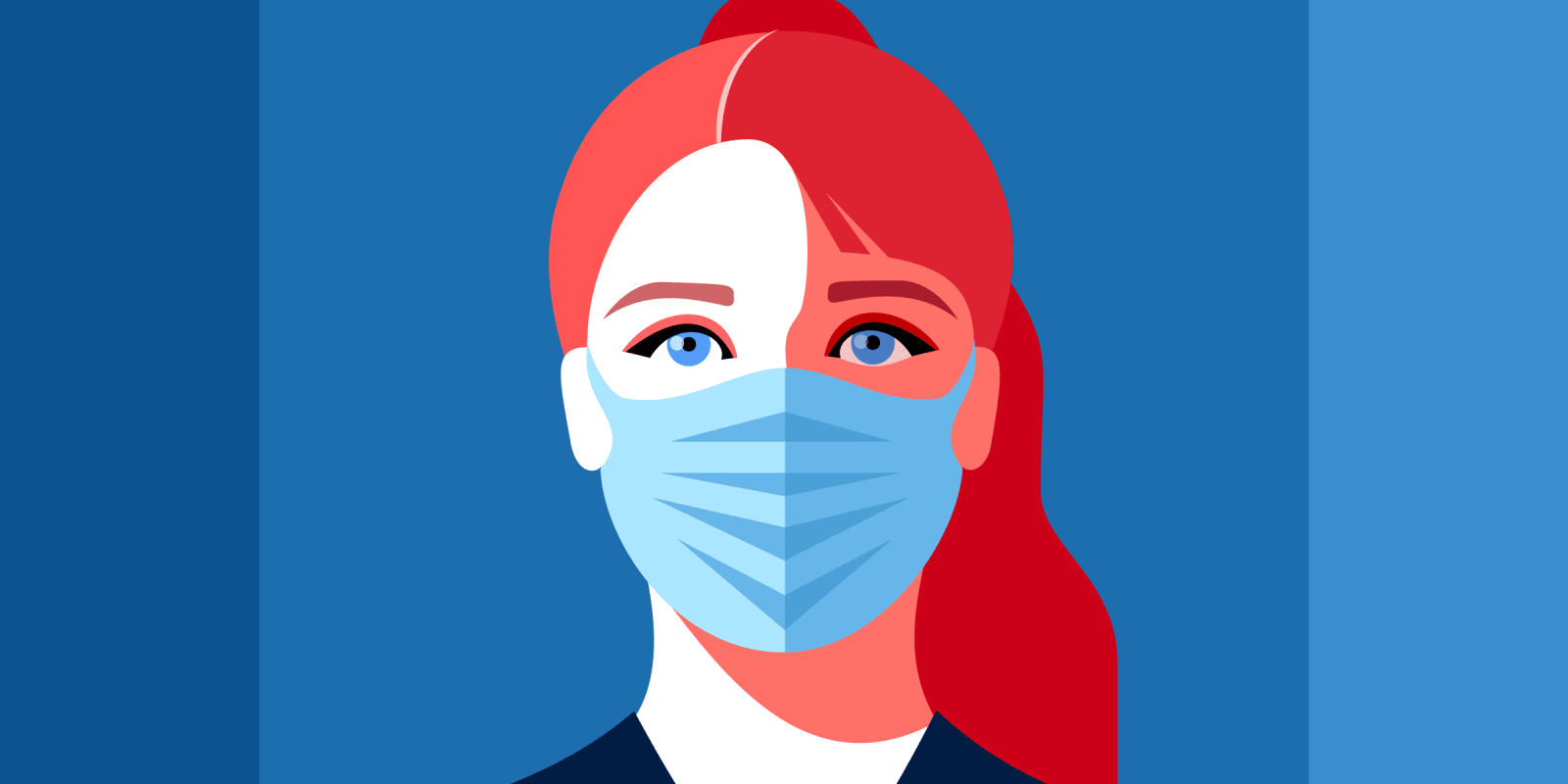I was only in the ENT clinic for the day, working under the supervision of the otolaryngologist to perform fiberoptic nasolaryngoscopies. The atmosphere was relaxed with fewer-than-usual appointment bookings, and I had twice the amount of time I usually did to interview each patient prior to their procedure. One patient was a pleasant woman approaching her late 50s who suffered from a rare variant of idiopathic spasmodic dysphonia, which caused involuntary spasms in the muscles of her larynx, making it difficult for her vocal cords to relax. With each response to my questions, her voice broke in spasmodic rhythms, her words crashing against her mask like muffled waves. She furrowed her brow as she attempted to speak, until suddenly, mid-sentence, she stopped with a sigh. She sat quietly, her blue eyes piercing mine.
“Um,” I said. As I exhaled, air escaped my N95 and fogged up my glasses.
I was not accustomed to this much time — or this much silence. In the ED, where I typically train, my time at the bedside had atrophied to keep up with the demands of efficiency: quick histories, often pieced together in fragments amidst hurried exams as I’m swept from one room to the next. Regrettably, the fear of exposure, on the part of both patients and myself, had made it easy to get lost in the flow of things.
Quietly, she sat. I couldn’t see her frown, or bite her lip, or any other of the numerous facial cues I was used to seeing. The social faculties I had previously taken for granted were now covered by a mask. I could only imagine her feelings, her forehead creases reflecting the growing frustration that we were woefully unconnected.
Her blue eyes pierced mine.
As a medical student, I was so adamant about seeing my patients eye to eye and being open to the vulnerability that can often only be communicated with eye contact. I was disciplined about it, criticizing myself if I didn’t notice a patient’s eye color because it meant I hadn’t spent enough time at their bedside. I even made a game out of describing eye color hues. Blue became faded denim; brown, sarsaparilla; green, Portland moss. If the eyes are the window to the soul, then the gaze, I believed, would hold attention and signal the patient’s importance.
In the ENT clinic, I readjusted my mask and asked her to try again, this time leaning in as she spoke, meeting her gaze, intent on making her feel heard. Slowly, her voice found a tempo. I guided the conversation toward her daily life, nodding as she spoke. She was finding little ways to cope, she said, and had taken a newfound appreciation in summer fireflies, a seasonal joy. As she spoke about catching fireflies as a child, smile lines formed along the edges of her eyes. It surprised me was how little trouble I had reading her emotions, once I made the effort to look.
Today, providers and patients alike must navigate within a reality where masks are both medically essential and politically provocative. We now must not only account for the physical masks, but also the emotional ones — the trepidation, anxiety, skepticism, and impatience that are now, more than ever, present. Patient connection remains as vital as ever, our tools have just shifted. For example, employing body language can make a big difference. An open stance, avoiding crossed arms, leaning toward rather than away from patients, making eye contact, and, circumstances permitting, sitting at the foot of the bed are small behaviors that can create opportunities for deliberate interaction. Even displays on name badges can serve as cues for inclusion that can make the patient feel acknowledged, seen, and heard. When our masks conceal what patients can see, it’s all the more important what we as providers show.
My interview ended as my attending entered the exam room. The patient let me maneuver the nasolaryngoscope down her throat. My attending described the plan for repeat botox injection of her vocal cords, which, while not permanent, would provide temporary alleviation of her symptoms. Hearing this news, the patient sighed in resignation. As she left the room, she turned to face me, her blue cotton mask matching the sky in her irises. She uttered a witty quip about fireflies and smile lines formed beside her eyes. I let my shoulders jiggle loosely as I laughed. It may not have seemed like much, but I hoped it was enough to make her feel heard.
Andrew Park is an emergency medicine resident at Beth Israel Deaconess Medical Center. A newcomer to Boston’s coffee scene, he spends his free days in cramped corners journaling about his experiences in and out of the hospital. He hopes his writing will inspire resilience within himself, his colleagues, and his patients. Andrew is a 2020–2021 Doximity Op-Med Fellow.
Image by amesto / Shutterstock
Click here to see more perspectives on COVID-19 from the Doximity network.
Click here for up-to-date news about COVID-19 on Doximity.







